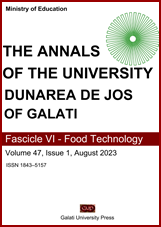Processing, characteristics and applications of expanded grains
Abstract
The popping and puffing are adiabatic expansion process in which the grains are exposed to high temperature for short time. The heat increases vapour pressure inside the grain leading to rupture of outer shell with expansion of starchy endosperm to several folds creating a crispy and aerated puffed snack. Conventional puffing methods use hot air, oil and sand as medium of puffing, whereas non-conventional puffing methods make use of microwave, fluidized air and pressure differential in system. Although it is commonly believed that processing conditions solely influence the quality of expanded grains, many other variables such as physical, chemical and genetic characteristics of grain, post-harvest handling practices, storage conditions and pre-treatments can also largely affect quality indices of expanded grains. As exposed to heat for only short time, expanded grains retain majority of nutrients and even improved digestibility and nutrient bioavailability traits. Flour obtained by milling of expanded grains exhibit desired functional properties expected in bakery products. This paper briefly discussed the factors influencing puffing quality and effects of puffing on physicochemical and morphological characteristics of grain along with its applications.


